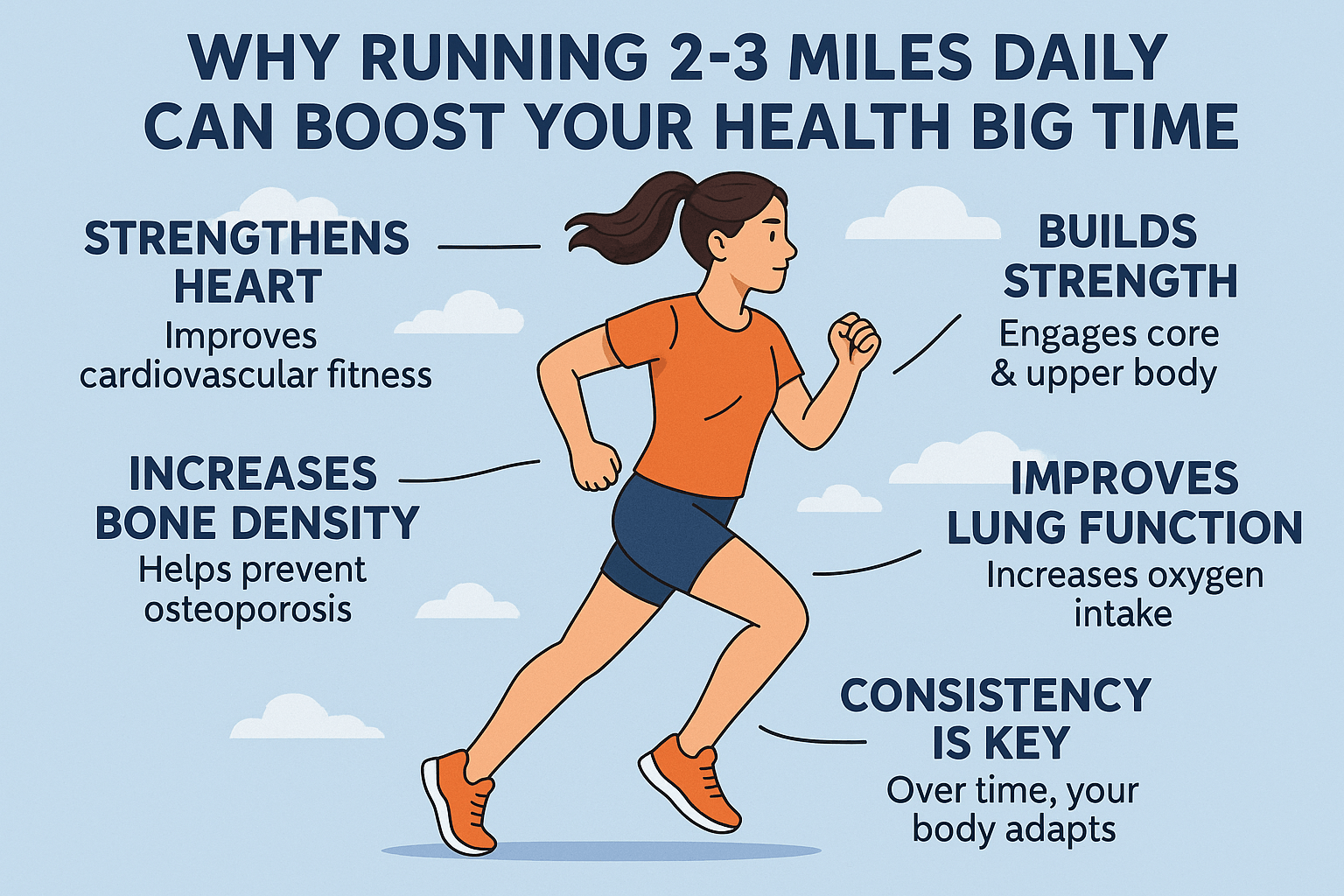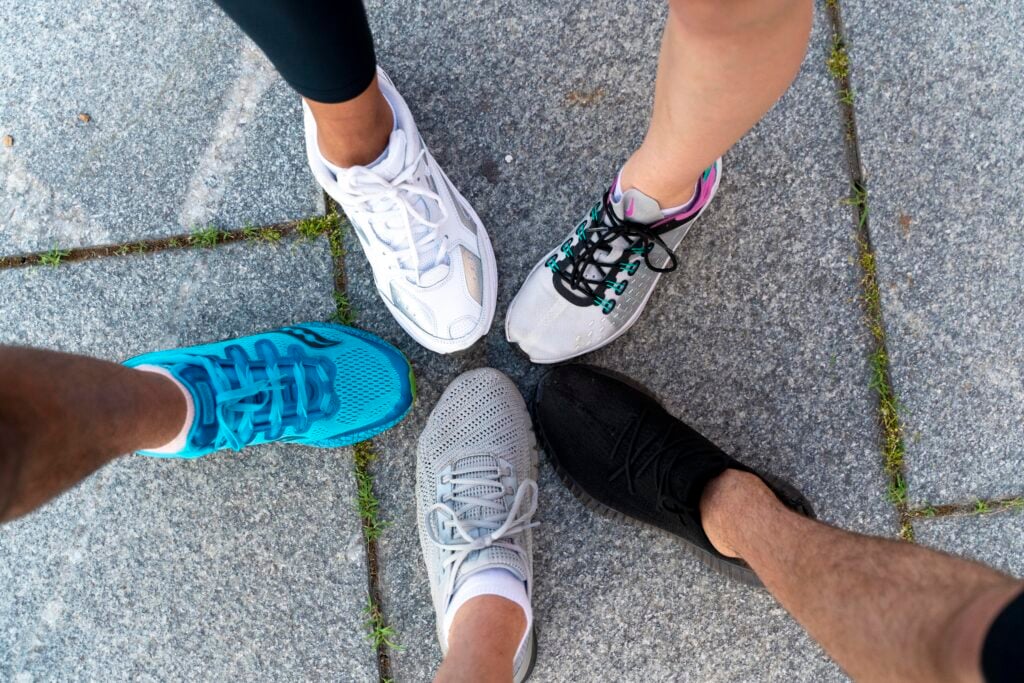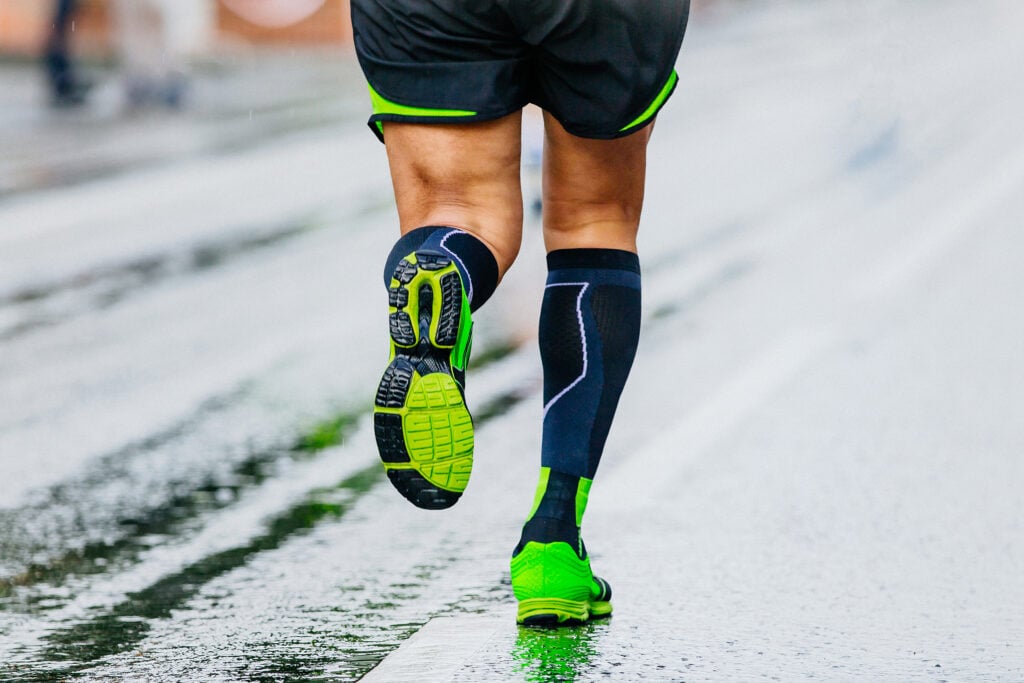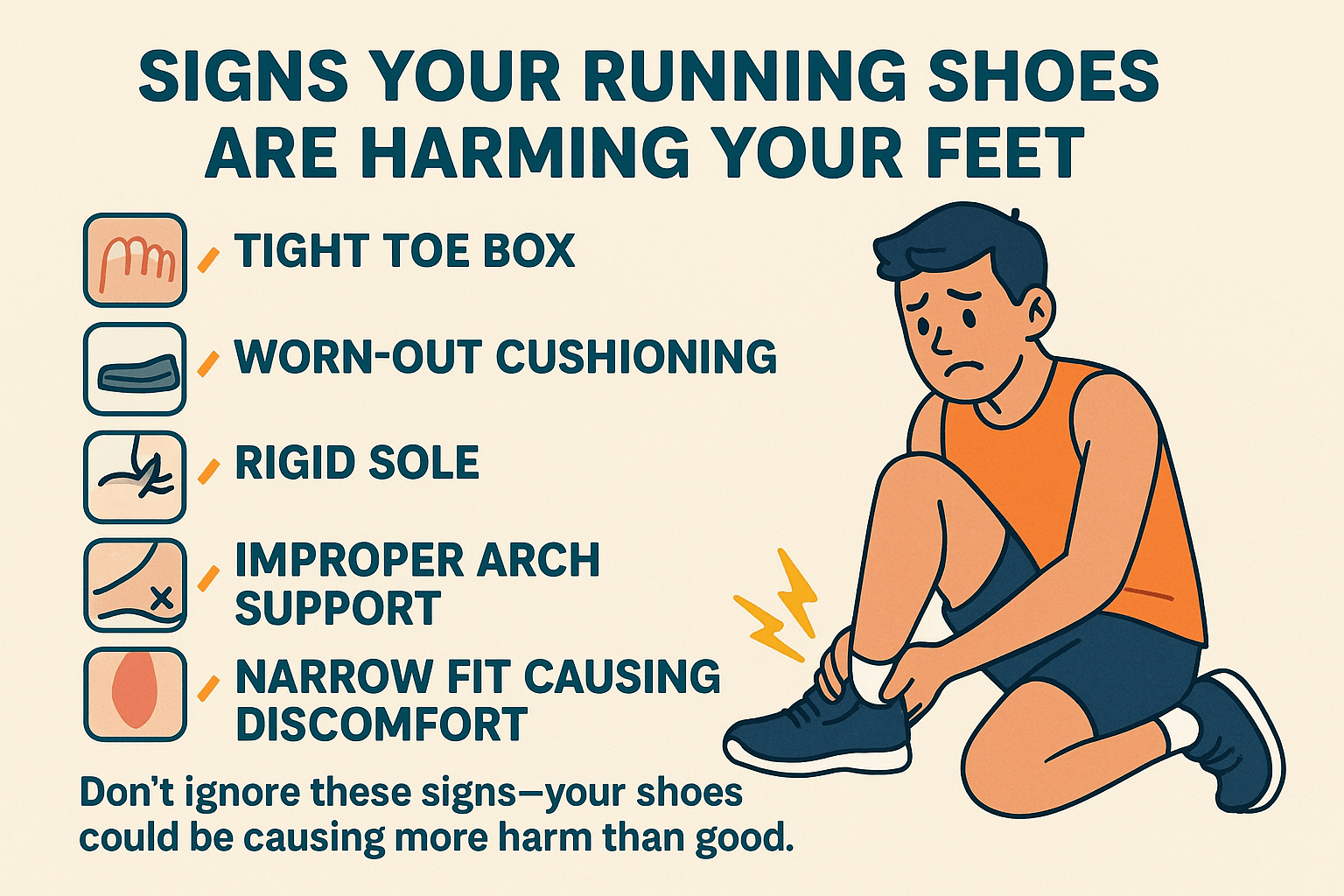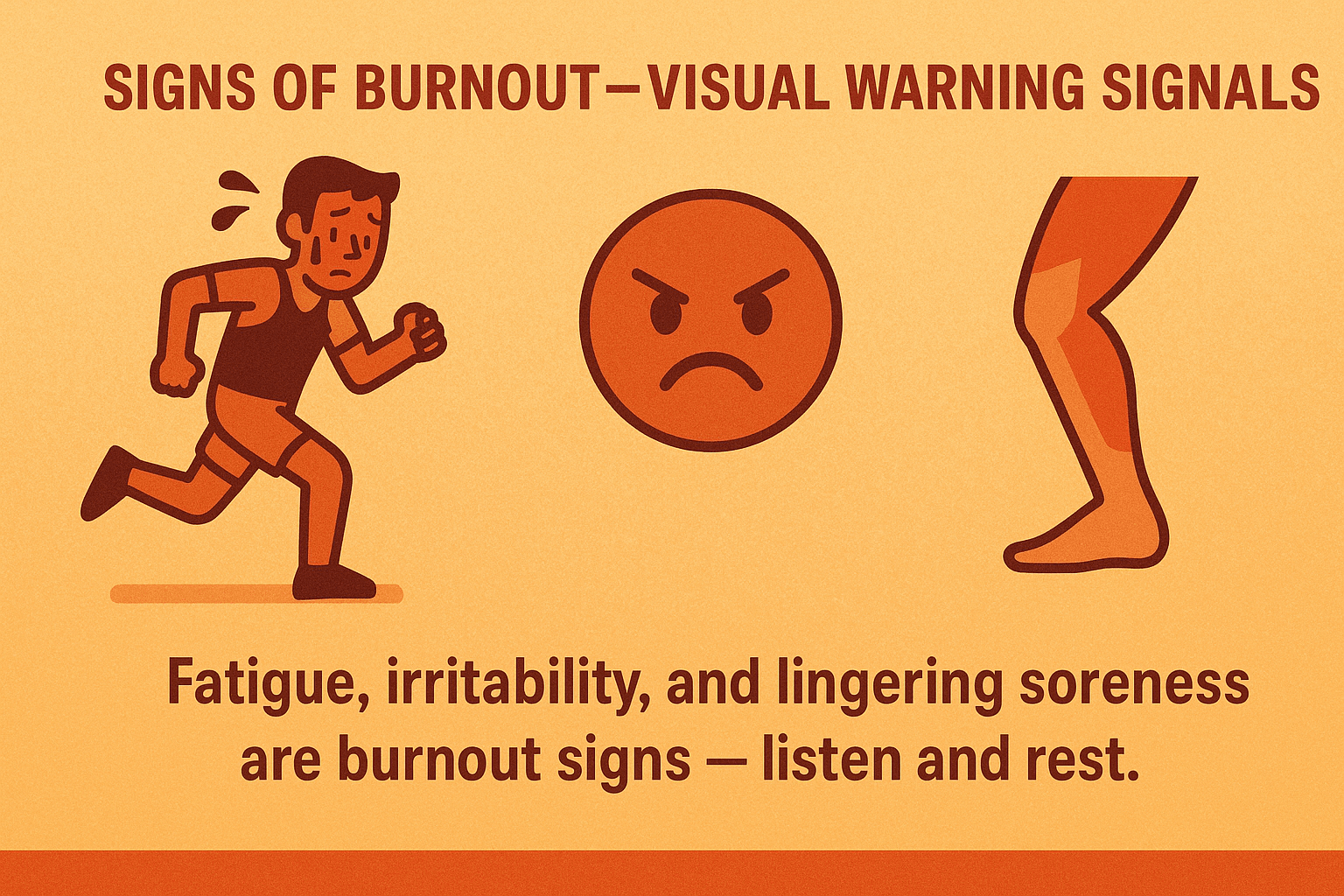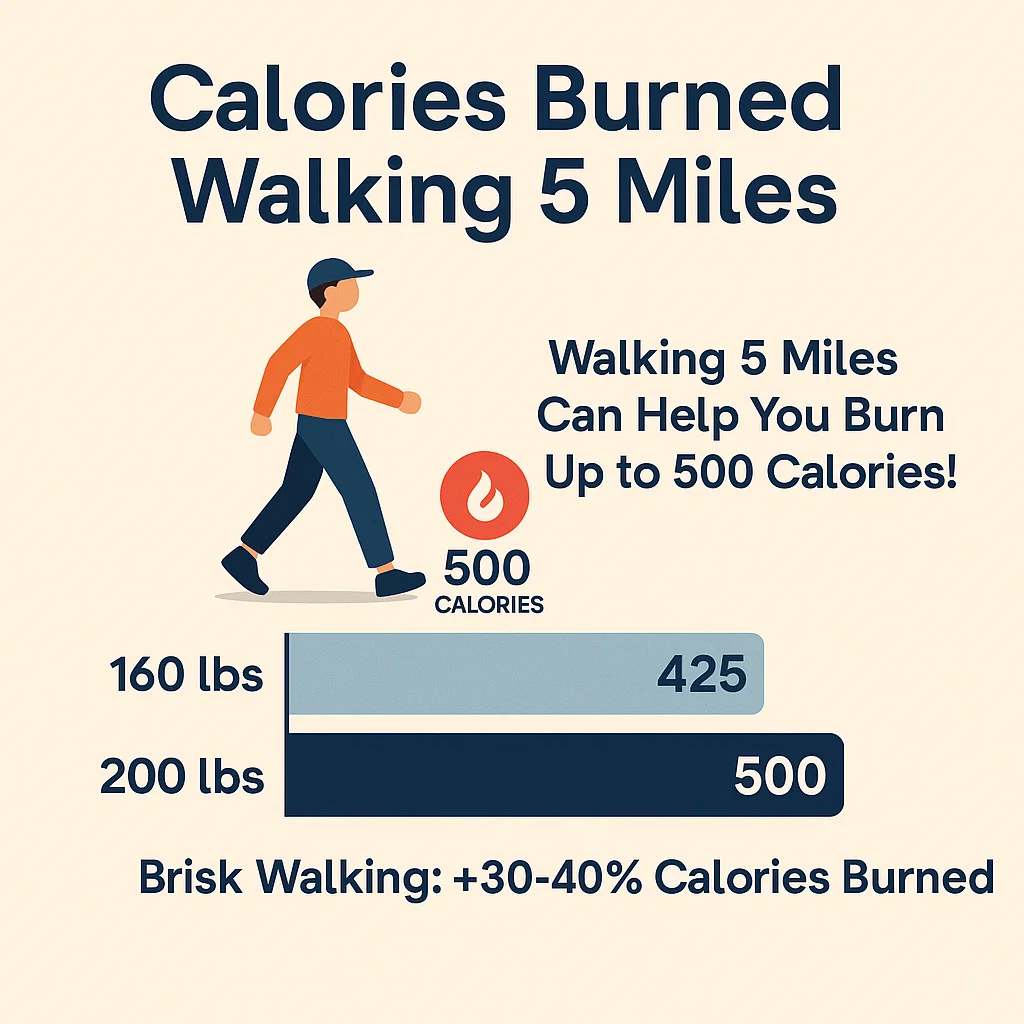Going from couch potato to finishing a 5K might sound like a fantasy right now.
Trust me, I’ve been there.
I haven’t forgotten my first attempt to jog around the block.
I didn’t even last a full minute. Shirt soaked. Breathing like a busted engine. Wondering, “What the hell am I doing?”
A few months later, I crossed the finish line of my first 5K—and yeah, I’ll admit, I teared up a little.
That plan didn’t just help me run. It gave me a structure, a habit, and a reason to show up.
And to be honest – I didn’t have a good plan back then.
But today I’ve a better plan and that’s what I want to give you.
This guide will walk you through the Couch to 5K (C25K) approach step-by-step—with no fluff.
Just honest, no-BS advice, real-life stories, and tips that actually work.
Let’s get to it.
What is the Couch to 5K Plan (and Why It Works)
Here’s the deal: Couch to 5K is an 8-week plan built to take you from zero to running 5 kilometers (that’s 3.1 miles).
You’ll train three times a week, using short run/walk intervals to gradually build up your endurance.
At first, the running portions are super short—like 1-minute jogs—so even if you haven’t run in years, you can start.
Then, week after week, the jogs get longer and the walks get shorter.
By Week 8, you’ll be running for about 30 minutes straight, which is typically enough to cover a 5K.
What makes this plan great? It’s not about pushing until you puke—it’s about slow, steady progress.
Your body gets time to adapt. That’s how you avoid burnout, injuries, and “screw this” moments.
Quick gut check: Can you walk for 30 minutes? Cool. Then you can start this plan.
Where Did Couch to 5K Come From?
C25K isn’t just another trendy challenge—it’s got history.
Back in the 90s, a runner named Josh Clark created the first version of the program to help his mom (who was in her 50s at the time) start running.
He shared the 9-week plan online in 1996, and since then, millions have followed it to run their first 5K.
Even the UK’s National Health Service (NHS) backs it with their own app and weekly podcasts.
That’s how proven this plan is—it’s helped couch-dwellers all over the world become actual runners.
Why Interval Training is the Secret Sauce
Couch to 5K works because it’s built on interval training—alternating between jogging and walking.
No shame in walking. In fact, it’s part of the magic.
Instead of running till you collapse, you’ll do something like jog 1 minute, walk 1–2 minutes to recover.
This method builds your cardio base without frying your legs or lungs. Each week, the running gets a bit longer, and the walking breaks get a bit shorter.
You won’t even notice the shifts at first. One day, you’ll realize you’re running for 10, then 15, then 20 minutes—and your brain goes, “Wait, did I just do that?”
Yep. That’s the plan doing its job.
Your mission this week: Get comfy with short jogs. Trust the process.
How Long is the Program?
Originally, C25K was a 9-week plan, but most versions—including mine—condense it into 8 weeks. Some stretch it out to 10 or 12 weeks.
Guess what? You don’t have to stick to anyone’s timeline but your own.
If you need to repeat a week, do it. If you breeze through, great. The goal isn’t to finish fast. It’s to finish strong and build something that sticks.
Pro tip: “Start slow to go fast later.” You don’t win this game by rushing.
How Often Do You Run?
Three runs a week. That’s it.
Usually something like Monday, Wednesday, Friday, with rest or easy movement on the other days.
Each session is about 20–30 minutes at first—including warm-up and cool-down—and grows to 30–40 minutes by the final weeks.
This schedule gives your body time to recover and keeps your motivation high.
I tell my clients, “Every other day is run day.” That rhythm builds the habit—and habits are what change lives.
Ask yourself: Can you commit to 3 days a week? If yes, you’re ready.
Why The Couch to 5K Plan Works
In case you’re still wondering why the C25K plan works, let me share with a few reasons:
It’s Beginner-Friendly
Let’s be real—starting to run from scratch feels like stepping into a fight you’re not trained for.
When I first tried to “get into running,”
I did what most beginners do: went out too hard, too fast, no clue what I was doing.
No warm-up, no plan. Just full send. I lasted maybe five minutes before I was huffing, cramping, and questioning my life choices. Sound familiar?
That’s why the Couch to 5K program hit different.
It gave me structure—no guessing, no winging it. Just a simple roadmap: walk a bit, jog a bit, repeat.
No pressure to be fast or fit. Just show up and follow the plan. That alone took the fear out of starting.
And trust me, the plan works because it meets you where you are.
You don’t have to be in shape or identify as a “runner.” You just have to press start on Day 1. Before you know it, you’re stringing together workouts and thinking, “Huh… I’m actually doing this.”
The numbers back it up, too. C25K has helped millions of people who thought they’d never run a mile, let alone a 5K.
It’s not magic—it’s a plan that doesn’t ask you to be a superhero. Just a human who shows up.
Slow & Steady Progress That Keeps You Healthy
Here’s the biggest reason most beginners quit: they do too much, too soon, and their body taps out.
That’s where Couch to 5K nails it.
It doesn’t just throw you into long runs and hope you survive. It builds you up gradually.
In the first week, you’re jogging maybe 6–8 minutes total in short bursts during a 20-minute session. And yeah, it might feel a little too easy. That’s on purpose.
Each week adds a tiny bit more—like 30 seconds to your jogs in Week 2. It’s sneaky smart.
Your body adapts without freaking out. Your brain starts to believe you can actually do this.
By the time you hit Week 5 or 6, you’ll be running several minutes at a time and wondering, “When did this become normal?”
That kind of gradual ramp-up is backed by exercise science.
According to the Journal of Strength & Conditioning Research, building intensity in small steps cuts injury risk and boosts fitness gains over time.
Josh Clark, the guy who created the program, said it best:
“Go slower than you think you should, and do less than you think you should. Be patient.”
And he’s right.
Rushing leads to shin splints, knee pain, tendon flare-ups—the usual suspects. I’ve coached runners who ended up sidelined just because they skipped this slow burn.
This plan? It’s like injury prevention wrapped in a training schedule.
As a coach, I can tell you straight up: this plan is one of the safest ways to start running without crashing and burning.
Motivation Boosts
Let’s not sugarcoat it—starting from zero is a mental grind.
I remember gasping through runs thinking, “This sucks. I’m not built for this.”
But C25K makes sure you get little wins early and often.
You finish your first workout? Boom—win.
You run for 3 minutes without dying? Another win.
These aren’t just feel-good moments—they’re psychological fuel. The program is designed to stack victories that boost your confidence. And it works.
Embrace the Beginner’s Mindset
Look, I’ve been there.
Starting out as a new runner can feel downright awkward.
Everything hurts, your breathing is off, and your legs feel like lead. That’s normal. You’re teaching your body something it’s never done before—moving for longer than a few steps without collapsing into a couch.
So here’s my first piece of advice: be patient with yourself.
It’s okay if you need to walk more than the plan says. It’s okay if you redo Week 3 before jumping into Week 4.
This program isn’t some military bootcamp—it’s a guide. You’re not “failing” anything. You’re showing up. That’s the win.
Truth is, no one cares—and if they do, they’ve forgotten where they started.
Even now, after years of running, I still take walk breaks on some runs.
And I coach runners who run marathons using walk-run intervals. It’s not weakness—it’s strategy. There’s zero shame in going slow or walking. You’re lapping everyone still sitting on the couch.
Your 8-Week Couch to 5K Plan
This is the roadmap that’ll take you from couch-bound to crossing your first finish line. You’ll run three days per week—just don’t run back-to-back days. Your body needs recovery just as much as it needs effort. 5K training is not that complicated.
Here’s how to make this plan work for you:
Pick Your Days
Choose three non-consecutive days for your runs. For example: Monday–Wednesday–Friday or Tuesday–Thursday–Saturday. Put them on your calendar like important meetings. Protect that time.
Warm Up & Cool Down
Every single run should start with a 5-minute brisk walk. Same goes for the cooldown. I won’t repeat this for every week—it’s a given. Warming up gets the blood flowing. Cooling down helps your legs recover so you’re not hobbling the next day.
Intervals = Run + Walk
Each workout includes both running and walking. When I say “run,” I mean jog. If you can’t hold a sentence while doing it, slow down. “Walk” means a brisk walk, not a stroll through the mall.
Listen to Your Body
This plan builds up slow on purpose. But if one week feels too hard? Repeat it. If you miss a few days? No shame—just pick back up. I’ve coached hundreds of runners who needed more time. You’re not behind—you’re moving forward at your own pace.
Cross-Train on Off Days
On rest days, feel free to bike, swim, stretch, lift, or just chill. Movement helps recovery. But if you’re really sore, take the full rest. Don’t pile on extra workouts thinking it’ll speed things up—recovery is training.
Now let’s get into the weekly workouts. You’ll see three runs per week, and remember: each one starts with a 5-minute warm-up walk and ends with a 5-minute cooldown walk. I left them out to save space, but they’re non-negotiable.
Ready to roll? Let’s break this plan down week by week.
Week 1 – Show Up, Don’t Stress
Focus: Let’s not worry about pace or distance right now. This week is about showing up, lacing up, and starting to build the habit. You’re here — that’s already a win.
Workout 1: Run 1 minute, Walk 1.5 to 2 minutes – Repeat 6 times
(That’s ~15 minutes of intervals, or about 25 minutes total with warm-up and cool-down)
Coach’s Tip: If 1 minute feels like a mountain, slow it down — like, embarrassingly slow if you need to. You’re not here to prove anything today. You’re here to finish the workout and feel like you could’ve done one more round. That’s how we build consistency.
Workout 2: Run 1 minute, Walk 2 minutes – Repeat 8 times
(About 24 minutes of intervals; 34 minutes total with warm-up/cool-down)
Coach’s Tip: Same pace as before. Just a couple more reps. And no, don’t sprint because “it’s only a minute.” Trust me — keep it chill. The goal is to stay consistent, not cook your legs on Day 2.
Workout 3: Run 1 minute, Walk 1 minute – Repeat 10 times
(20 minutes of intervals; ~30 minutes total)
Coach’s Tip: Shorter walk breaks, so yeah — it might feel a bit tougher. That’s okay. You’re nearly through your first week. When you’re done, stretch it out, drink some water, and high-five yourself (even if it’s just mentally).
By the end of Week 1, you’ve racked up 6–8 minutes of total running each session. That’s no joke. Most people never make it this far. Be proud. And don’t be surprised if it actually felt… kinda fun?
Week 2 – Build the Confidence
Focus: Now we start bumping up the running time — nothing wild, just a gentle push past those 1-minute marks. Your body is learning. Your brain is adjusting. You’re becoming a runner.
Workout 1: Run 2 minutes, Walk 2 minutes – Repeat 5 times
(~20 minutes of intervals; 30 minutes total)
Coach’s Tip: Two minutes can feel like a mini race if you start too fast. Keep it slow and steady. Equal walk time means plenty of recovery. Don’t worry if you’re sucking wind on the last rep — that’s strength in the making.
Workout 2: Run 3 minutes, Walk 2 minutes – Repeat 4 times
(20 minutes of intervals; ~30 minutes total)
Coach’s Tip: Three minutes might be the longest stretch you’ve run in years. That’s huge. When your mind wants to quit at minute two, just tell yourself, “One more minute.” You’ve got this. Walk breaks are there to reset — use them.
Workout 3: Run 3 minutes, Walk 1 minute – Repeat 5 times
(20 minutes of intervals; ~30 minutes total)
Coach’s Tip: One-minute walks now, which means more time running than resting. That’s a shift. If you need to slow down, do it. Nobody’s timing you. By the end, you’ll hit 15 full minutes of running — solid progress.
By the end of Week 2, you’re stacking up 15 minutes of running per workout — broken into manageable chunks. Two weeks ago, 3 minutes felt impossible. Now you’re doing it over and over. That’s not luck — that’s consistency paying off.
Did Week 2 make you feel stronger or scare you a bit?
Either way, you’re doing the work. Repeat the week if needed — nothing wrong with locking in the gains.
Week 3 – Step It Up
Focus: Now we’re stretching those run intervals. This is where you go from “runner-in-training” to “holy crap, I just ran for 5+ minutes straight.”
Workout 1: Run 5 minutes, Walk 3 minutes – Repeat 3 times
(24 minutes of intervals; ~34 minutes total)
Coach’s Tip: This is the first real milestone. Five straight minutes. Doesn’t matter if it’s slow — even a light jog counts. I remember my first 5-minute run… I thought it’d break me. But I kept moving, and so will you.
Workout 2: Run 5 minutes, Walk 2 minutes – Repeat 3 times
(21 minutes of intervals; ~31 minutes total)
Coach’s Tip: Shorter rest, same run. A little tougher. Focus on your breathing — I usually go with 3 steps inhale, 3 steps exhale. If you’ve got a playlist or podcast, now’s the time to use it as a distraction tool.
Workout 3: Run 6 minutes, Walk 2 minutes – Repeat 3 times
(24 minutes of intervals; ~34 minutes total)
Coach’s Tip: Six minutes of running. That used to feel impossible, right? But now you’re here. One trick I use on tough runs — split it up mentally. “Three minutes now, then another three.” It works.
By the end of Week 3, you’ve probably run 18 full minutes during a workout. You might even hit close to 2 miles total between walk/run combos.
More importantly — your body is adapting.
You recover faster. Your legs feel less trashed. And you start to think, “Maybe I can keep this going.”
Week 4: Find Your Rhythm – Longer Runs, Fewer Breaks
Focus:
This is where things start to shift. You’re no longer just dipping your toes in—you’re running longer stretches now.
By Week 4, you’ve already shown yourself that 5+ minutes is possible.
Now it’s time to stretch that further. We’re aiming for a steady rhythm you can hang onto without falling apart.
Workout 1: Run 8 minutes, Walk 3 minutes – repeat 2x
(Total: 16 minutes of running; about 26 minutes with warm-up/cool-down)
Coach’s Tip:
Alright, you’re running 8 minutes at a time today—roughly a kilometer or more for most beginners. That’s a solid chunk.
The good news? Just two rounds.
No third set hanging over your head. Keep your pace easy and steady—don’t race it. If 8 minutes feels long, zone out to your favorite song or let your thoughts wander.
The first few minutes usually feel the worst. After that, it starts to click. And remember—you’ve got a walk break right in the middle. Use it well.
Workout 2: Run 10 minutes, Walk 2 minutes – repeat 2x
(Total: 20 minutes of running; about 30 minutes total)
Coach’s Tip:
Double digits! That’s a big deal. Ten minutes of running is close to a mile for a lot of folks.
During this run, do a quick body scan: are your fists clenched? Shoulders tight? Jaw locked? Relax. Let your stride stay light and easy.
If you’re tired, good—it means you’re doing something new. You’re breaking new ground.
Just keep reminding yourself: “Ten minutes—I can handle that.” After your walk, do it again. That’s 20 minutes total. Not long ago, 2 minutes felt like a grind. See how far you’ve come?
Workout 3: Run 12 minutes, Walk 2 minutes – repeat 2x
(Total: 24 minutes running; about 38 minutes total)
Coach’s Tip:
Now we’re cooking. This workout’s a test. Two rounds of 12 minutes. That’s nearly two miles, broken up by just one quick breather.
Here’s the trick: break it down in your head. Think “4 + 4 + 4” or “3 x 4-minute chunks.” Whatever works. But don’t overthink it—just keep moving.
You might hit a rhythm where it actually feels easier to keep going than to stop. When you finish, take a second to look back. You were struggling with 90-second runs not long ago. Now you’re knocking out 12. That’s no small win.
Week 5: Breaking Through – Time to Prove It
Focus: Week 5 is the big one. The challenge that gets circled, underlined, and feared by a lot of runners in this program.
Why?
Because the schedule starts tossing out longer, nonstop runs. By the end of the week, you’ll probably hit 20 minutes without a break. It sounds wild now—but trust me, you’re ready.
Workout 1: Run 15 minutes, Walk 3 minutes, Run 5 minutes
(Total: 20 minutes running, split with a break; about 33 minutes with warm-up/cool-down)
Coach’s Tip:
You’re opening this one with a 15-minute run—no warm-up walk to ease you in. Don’t panic. Start way slower than you think you need to. That walk break will feel like gold after those 15 minutes. Then you’ve just got a 5-minute finisher. Compared to the first stretch, that last 5 will feel like a breeze. If this scares you a little, that’s a good sign. It means you care. Go get it.
Workout 2: Run 20 minutes nonstop
(Total: ~30 minutes with warm-up/cool-down)
Coach’s Tip:
This is it. The famous 20-minute run. No walk breaks. No bailouts. This workout has broken and made a lot of runners. It’s your proving ground. Here’s how I handled mine: I didn’t look at my watch. I split the run in my head—four 5-minute chunks. I started slow, breathed easy, and let the pace come to me.
The first 5 felt awkward, the second was okay, and by the third I was cruising. By the fourth? I was too stubborn to quit. Whether you run 1.5 miles or 2.5, I don’t care. The number doesn’t matter right now. What matters is time on your feet. And when you finish this? You’ll start believing you’re a real runner. Because you are.
Workout 3: Run 8 minutes, Walk 5 minutes, Run 8 minutes
(Total: 16 minutes running; about 26 minutes total)
Coach’s Tip:
After going full beast mode with the 20-minute run, this one’s a little breather. Still legit, but more manageable. Two 8-minute intervals with a nice 5-minute walk break in between. This is your chance to focus on form again:
- Head up
- Shoulders loose
- Arms flowing naturally
- Feet landing under you, not out front
Feel anything different from Week 1? Yeah, that’s progress. You’ve earned it.
Week 6: Building Stamina — Pushing Through
Main Focus: This week is all about running longer and walking less. By now, your legs are waking up, and your lungs don’t hate you as much. It’s time to stretch that endurance muscle a little more — not by sprinting, but by holding steady and staying with it even when it gets tough.
Workout 1: Run 20 minutes, walk 3, then run 5 more
Total Running Time: 25 minutes
With warm-up/cool-down: About 35 minutes
Coach’s Tip:
Alright, we’re back to long, steady running — just like in Week 5. But this time, you’ll tack on a little “bonus” 5-minute push at the end. Think of the 3-minute walk in the middle as a breather, not a full recovery. That second run is meant to mimic the final stretch of a 5K — when you’re tired but know the finish line is close.
I tell my runners all the time: “That last push? It’s all in your head.” Practice kicking it in mentally. Even if your body’s saying “stop,” prove it wrong for five more minutes. This workout trains your brain just as much as your legs.
Workout 2: Run 22 minutes nonstop
Total Time: About 32 minutes with warm-up/cool-down
Coach’s Tip:
Now we’re starting to treat 20+ minutes of running like it’s normal — and it should be! You’re closing in on two solid miles without stopping. That’s no joke. If you’re tired of the same old loop around your neighborhood, switch it up. Go find a park, a dirt trail, or even a quiet street you’ve never run before. New scenery can give your mind something else to focus on besides how much time is left on the clock.
Also, throw on a playlist or podcast you actually enjoy. Make it something you’d listen to even if you weren’t running. That mental boost can be the difference between quitting at minute 16 and making it to the end.
Workout 3: Run 25 minutes nonstop
Total Time: About 35 minutes with warm-up/cool-down
Coach’s Tip:
Twenty-five minutes straight — that’s big. Most beginner runners are hitting somewhere between 2 to 2.5 miles here. Not long ago, running even 5 minutes probably felt like climbing Everest. But look at you now.
Try this trick: do a talk test during the run. Can you speak a sentence without wheezing? If not, back off the pace. You should be able to get out a few words per breath. Keep it easy. This isn’t about being fast — not yet. It’s about building your base.
When you finish this one, give yourself some credit. You just ran for nearly half an hour straight. That’s serious progress.
Week 7: Almost There — Locking In Your Endurance
Main Focus: This is your dress rehearsal. It’s time to run like you’re already toeing the 5K start line. By the end of this week, you’ll be logging 28–30 minute runs with no walk breaks — which for many is the same as covering a 5K.
Workout 1: Run 28 minutes nonstop
Total Time: About 38 minutes with warm-up/cool-down
Coach’s Tip:
This is a legit run. Most beginners will be somewhere around 2.5 to 2.8 miles when they’re done. But don’t focus on the distance — focus on the time.
I like to break these longer runs into chunks. I’ll tell myself, “Alright, just get through the first 15 minutes.” Then, once I’m there, I focus on the next stretch.
Sometimes I’ll switch up songs halfway or imagine I’m running to a specific landmark and back. Whatever helps keep your mind in the game.
If you need a short walk break, take it. But only if you really need it. You’re training your brain now just as much as your legs.
Workout 2: Run 30 minutes nonstop
Total Time: About 40 minutes with warm-up/cool-down
Coach’s Tip:
This is the big one — the 30-minute continuous run. For many of you, this is your first full 5K by time, even if the distance comes out a bit short or a bit long. Either way, you’ve hit the real milestone.
Start this run slow — like shuffling slow. I’ve blown up plenty of runs by going out too hard in the first 10 minutes. Ease into it, and if you’ve got gas left near the end, pick it up a notch.
Visualize the finish line while you’re out there. Picture your friends cheering, the medal around your neck, that feeling of pride — because you’re earning all of it, one step at a time.
Workout 3: Run 30 minutes (or full 5K distance)
Target: Around 3.1 miles, whatever time it takes
Coach’s Tip:
This one is flexible. If you didn’t hit the full 5K in your 30-minute run earlier, this is your chance to push a little further. If you already reached it, no need to overdo it — just focus on feeling strong and steady.
You might want to treat this like a mini race simulation. Plan out a 5K route, wear what you’ll wear on race day, and maybe even time it like a real event. See how it feels. This gives you one last confidence boost before the “official” 5K.
And hey — if you haven’t signed up for a real 5K yet, maybe now’s the time. Having a date on the calendar makes everything feel more real.
Week 8: Graduation Week – Race Prep & Game Time
Alright, this is it. Week 8. The final stretch. If you’ve made it this far, you’ve already done the hard part—showing up week after week. Now it’s time to run your 5K and soak in the work you’ve put in.
This week is all about getting your legs fresh, your head in the right space, and crossing that finish line with a sense of pride. We’re dialing things back a little to help you arrive ready, not wrecked.
Workout 1: 20-Minute Easy Run
(~30 minutes total with warm-up and cooldown)
This one’s short on purpose. You’ve been building up for weeks—now it’s time to ease off the gas just a bit. Think of it as a dress rehearsal. Keep it chill.
Focus on your form, your breathing, and remind yourself how far you’ve come.
Feel free to throw in a couple of 30-second pickups near the end—just little reminders to your legs that they still know how to move. Nothing wild. Just enough to stay sharp.
Coach Tip: You can run longer. You’ve done 30 minutes straight before. So mentally, this one should feel light. Use it to boost your confidence, not burn you out.
Workout 2: Run 10 Min – Walk 5 Min – Run 10 Min
(~35 minutes total)
Another easy session. Nothing fancy. Just shake out the nerves and keep those legs loose. This is your final run before the big 5K, so keep it simple and stress-free.
Here’s something I do: During this run, start picturing yourself crossing that finish line. Visualize the course, your pace, the final push. It might sound cheesy—but trust me, that mental prep goes a long way.
Coach Tip: You’ve already done the training. You don’t need to do more. You just need to stay focused and trust your legs.
Workout 3: 5K Race (or Solo Run) 🏁
This is the big one. Race day. Whether you’re lining up at an official event or just plotting out 3.1 miles in your neighborhood, this is your victory lap.
Stick to the routine that works for you—light snack, good night’s sleep, a little warm-up with a brisk walk and some dynamic moves.
When the adrenaline kicks in (and it will), don’t let it make you bolt out of the gate. Settle into a pace like you’re doing one of those 25–30 minute runs from training. Stay steady.
Coach Tip: If you need a walk break, take it. But remind yourself—you’ve run 30 minutes straight before. You can do this. Finish strong, not collapsed.
When you hit the final stretch, look back at Week 1—those awkward early runs, the doubts, the soreness—and realize how far you’ve come. That last push? Make it count. Throw your hands up, smile, cry, dance—whatever. You did it.
You’re Officially a 5K Finisher
That’s no small thing. You set a goal, you followed through, and now you’re part of the running tribe. Feel the high. Enjoy the soreness. You earned it.
Celebrate how you like—grab a good meal, show off that bib, post your finish time, or just sit back and smile like a badass. This is what commitment looks like.
So… What Now?
The finish line isn’t the end. It’s just the next step. You’ve built momentum—don’t let it fizzle.
Here’s where a lot of new runners start asking, “Okay, now what?”
Let’s talk options:
1. Run Faster
Now that you’ve finished a 5K, maybe you want to improve that time. Good news—you’ve got a baseline. Time to beat it. You can repeat this plan or level up to something that adds tempo runs or intervals.
Even just sticking to running 3 miles a few times a week will help you get faster. Your body adapts. You’ll get stronger with consistency.
What’s your 5K time? Want to shave off a few minutes? Let’s talk goals.
2. Go Longer – 10K and Beyond
If you’ve caught the running bug (happens to the best of us), the next big step is the 10K. That’s 6.2 miles—not double the pain, but definitely a solid next challenge.
There are “Bridge to 10K” plans that ease the transition. I’ve written one that breaks it down step-by-step. And if you want more challenge, you can also try my couch to half marathon plan.
From experience, going from 5K shape to 10K usually takes another 6 to 8 weeks. Just like C25K, it’s a slow build—but a rewarding one.
3. Keep the Habit Going
You don’t have to chase a new race or time goal. Some runners just enjoy the rhythm. Running 3 times a week for 20–30 minutes is one of the best things you can do for your health—physically and mentally.
Some folks stick to something like Week 6 or 7 as their regular plan. Others join local run groups, park runs, or just find a buddy to keep them accountable.
Figure out what keeps you moving—and make it part of your routine.
4. Mix Things Up
With a running base under your belt, you can explore. Maybe you hit the trails. Maybe you add strength training, cycling, or a few fitness classes.
Whatever you do, don’t drop running completely. It’s your anchor now. Even once a week keeps that endurance fire burning.
A Final Word from Coach David
If you’ve made it this far, you’re well on your way to making a positive change in your life.
I wrote this guide with the hope that it will inspire and support you, just like a personal coach by your side. I started as a newbie runner myself – clueless, out of shape, and a bit scared.
Running has since taken me on adventures across Bali’s rice fields and beaches, and connected me with an incredible community (both online and offline).
I can genuinely say running changed my life for the better, and I love that I get to share that gift with others now.
Now, enough reading – let’s get you running! 💪👟
Ready to turn your couch into a 5K success story?
The best time to start is now.
I’ll see you out there on the roads or trails. Until then, happy running!

